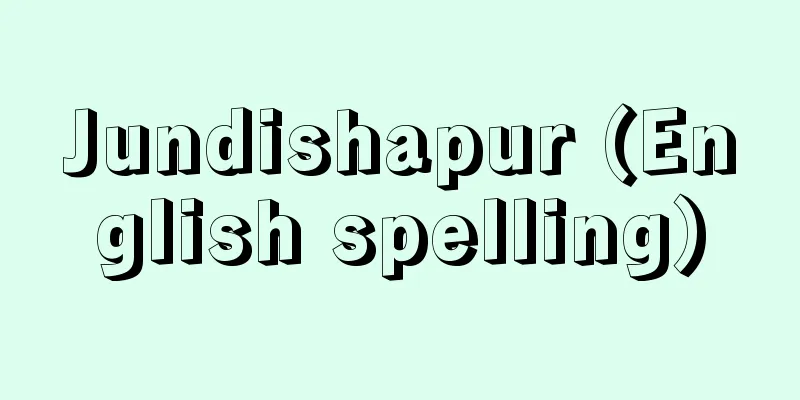Matsukawa Incident

|
At 3:09 a.m. on August 17, 1949 (Showa 24), a train overturned near Matsukawa Station on the Tohoku Main Line, killing three locomotive crew members. The cause of the incident was deliberate destruction of the railroad tracks. One month after the incident, based on a confession (the so-called Akama confession) by a former JNR worker who was 19 years old at the time, the investigating authorities concluded that the crime was the result of a conspiracy between members of the Fukushima branch of the JNR union and members of the Matsukawa factory union of Tokyo Shibaura Electric (Toshiba), and indicted a total of 20 people, including the first arrestees, 10 from the JNR and 10 from Toshiba. The majority of them were members of the Communist Party. At the time, administrative reorganization and business consolidation were being carried out along the Dodge Line, but the success or failure of the plan depended on the confrontation between the labor and management of the National Railways over the dismissal of 95,000 workers. The Shimoyama and Mitaka incidents occurred in the midst of this confrontation, and the Matsukawa incident was a strange incident that struck the National Railways Union for the third time, after the two incidents had dented the fighting spirit against administrative reorganization. Moreover, the Fukushima branch of the National Railways Union was led by the left wing and was one of the base branches for the opposition struggle. Toshiba was also the company that had attracted the most attention in the private business consolidation, and a strike was planned at the Matsukawa plant under the leadership of the Toshiba Labor Union. The day after the incident, Chief Cabinet Secretary Masuda issued a statement saying, "This incident is an unprecedented heinous crime. It has the same ideological undercurrent as the Mitaka incident and other various incidents." However, the investigation proceeded in the direction of this statement, dealing a major blow to the struggle of labor unions both locally and nationwide, and to the activities of the Communist Party. At the trial, all the defendants, including the confessors, denied the crimes, and the biggest issues were the credibility of the confessions and whether or not they had been tortured or coerced during the interrogations. The Fukushima District Court, the first instance trial, sentenced all of them to death and life imprisonment on December 6, 1950, and the Sendai High Court, the second instance trial on December 22, 1953, acquitted three defendants and sentenced the rest to death. However, during the appeal trial, the existence of the "Suwa Memo," which had been seized by the prosecution and proved the defendants' alibis, came to light, and the prosecution's theory of conspiracy collapsed. As a result, the Supreme Court, by a majority opinion (7 members to 5 dissenting), ordered the case to be remanded to the Sendai High Court. Behind the change in the course of the trial was the development of a popular legal struggle along with the discovery of new evidence. The defendant's own correspondence (about 150,000 letters) appealed to the public for his innocence and the injustice of the verdict, and the defendant's family's nationwide pilgrimages, led to an unprecedented expansion of the support system. After the second trial, the defense team reached an unprecedented size of 173 people, and intellectuals such as Shiga Naoya, Yoshikawa Eiji, Kawabata Yasunari, and Uno Koji also called for a fair trial. Among them, Hirotsu Kazuo published "The Truth Speaks" in the magazine Chuokoron in the fall of 1953, and after the second trial, he serialized "Criticism of the Matsukawa Second Trial Verdict" in the same magazine for four and a half years from the April 1954 issue, leading public opinion. On March 9, 1983, the Matsukawa Incident Countermeasures Council was formed as a nationwide organization with the participation of over 40 organizations, including Sohyo, Kokuro, the Japan Journalists Conference, the Japan Federation of Bar Associations, and the National Rescue Association, as well as individuals. Subsequently, through on-site investigations of the Matsukawa March and the Matsukawa film movement (attracting an audience of 3.7 million people), public opinion began to demand a fair trial and acquittal. In the midst of this support movement, the Sendai High Court, which received the Supreme Court decision, re-examined the entire case, including questioning many witnesses, inspecting the scene, and submitting documentary evidence, and on August 8, 1961, it acquitted all defendants, stating that "the only direct evidence of the crime was the confession," that the credibility of the confession was not recognized, and that "without Akama's confession, the Matsukawa Incident would not exist," and that the alibi of the person who was said to be the central perpetrator of the crime was also clear, greatly undermining the foundations of the case. Then, on September 12, 1963, the Supreme Court dismissed the prosecution's appeal, bringing the trial to an end after 14 years. However, the statute of limitations expired the following August, and although there is a theory that it was a plot by the U.S. military, the truth remains unknown to this day. After his acquittal, the former defendant filed a lawsuit seeking compensation from the state, with the first trial taking place on April 23, 1969, and the second trial taking place on August 1, 1970. The amount of compensation awarded was over 76 million yen. [Shoji Arakawa] "Fifteen Years of the Matsukawa Incident," edited by the Matsukawa Incident Countermeasures Council and the Matsukawa Movement History Compilation Committee (1964, Labor Junposha)" ▽ "Complete History of the Matsukawa Movement," edited by the Matsukawa Movement History Compilation Committee (1965, Labor Junposha)" ▽ "The Matsukawa Trial, volumes 1, 2 and 3, by Hirotsu Kazuo (Chuko Bunko)" ▽ "The Matsukawa Incident and the Trial: The Prosecutor's Logic, by Hirotsu Kazuo (1964, Iwanami Shoten)" ▽ "Postwar Political Trial History Records, volumes 1 and 4, edited by Tanaka Jiro et al. (1980, Daiichi Hoki Publishing)" Source: Shogakukan Encyclopedia Nipponica About Encyclopedia Nipponica Information | Legend |
|
1949年(昭和24)8月17日午前3時9分、東北本線松川駅付近で列車が転覆し、機関車乗務員3人が死亡した事件。人為的な鉄道線路破壊が原因であった。事件発生後1か月して、当時19歳の元国鉄工手の自白調書(いわゆる赤間(あかま)自白)に基づき、捜査当局は国鉄労組福島支部員と東京芝浦電気(東芝)松川工場労組員の共同謀議に基づく犯行と断定、最初の逮捕者を含め国鉄側10人、東芝側10人、計20人を起訴した。その大半は共産党員であった。 当時ドッジ・ラインに沿って行政整理、企業整備が進められていたが、9万5000人の解雇をめぐる国鉄労使の対決はその成否を握っていた。この対抗の最中に起こったのが下山(しもやま)、三鷹(みたか)事件であり、両事件で行政整理反対の闘争意識をくじかれた国鉄労組を三たび襲った怪事件が松川事件であった。しかも、国労福島支部は左派が指導権をもち、反対闘争の拠点支部の一つであった。また東芝は民間企業整備で最大の注目を集めていた経営で、松川工場では東芝労連の指導下でスト突入を予定していた。事件発生の翌日、増田官房長官は「今回の事件はいままでにない凶悪犯罪である。三鷹事件をはじめ、その他の各種事件と思想的底流においては同じものである」との談話を発表したが、捜査はこの談話の方向で進められ、地域的・全国的な労組の闘争、共産党の活動に大きな打撃を与えた。 裁判では、自白者も含め全被告が犯行を否認し、この自白の信憑(しんぴょう)性、取調べの際に拷問、強制があったか否かが最大の問題となった。一審の福島地裁は、1950年12月6日、死刑5人、無期懲役5人を含め全員有罪を宣告し、53年12月22日の二審仙台高裁判決も、3人を無罪としたほかは死刑を含む内容であった。しかし、上告審に至って、検察側が押収していた、被告らのアリバイを証明する「諏訪(すわ)メモ」の存在が明るみに出、検察の主張する共同謀議説が崩れた。このため最高裁は多数意見(7人、反対5人)をもって、仙台高裁差戻しを命じた。 裁判の流れを変えた背景には、新証拠の発見とともに大衆的裁判闘争の発展があった。国民に無実と判決の不当を訴える被告自身の通信活動(約15万通)、被告家族の全国行脚(あんぎゃ)による訴えにこたえ、支援体制は未曽有(みぞう)の広がりをみせた。弁護団は二審後173人という空前の規模に達し、志賀直哉(しがなおや)、吉川英治(よしかわえいじ)、川端康成(かわばたやすなり)、宇野浩二(うのこうじ)ら文化人も公正裁判を要請した。なかでも広津和郎(ひろつかずお)は1953年秋、雑誌『中央公論』に「真実は訴える」を発表し、第二審判決後は同誌に54年4月号から4年半にわたり「松川第二審判決批判」を連載、世論をリードした。58年3月9日には、総評、国労、日本ジャーナリスト会議、自由法曹団、国民救援会など四十数団体、および個人が参加する全国組織「松川事件対策協議会」が結成され、その後、松川大行進現地調査、松川劇映画運動(370万人観客動員)などを通じて公正裁判要求、無罪要求を国民世論にしていった。 こうした支援運動のなかで、最高裁決定を受けた仙台高裁は、多数の証人尋問、現場検証実施、書証提出など事件全体を調べ直し、1961年8月8日、「犯行の直接の決め手は自白のみ」、その自白の信用性は認められず「赤間自白なくして松川事件は存在しない」、実行行為の中心者とされる者のアリバイも明確であり、事件の根幹は大きく揺らいだ、として、被告全員に無罪を言い渡した。ついで、63年9月12日、最高裁は検察側上告を棄却し、14年の歳月を要した裁判は終わった。しかし、翌年8月、事件は時効となり、米軍謀略説もあるが、真相は現在に至るも不明である。 なお、無罪確定後、元被告人は国家の賠償を求めて訴訟を起こし、1969年4月23日一審、70年8月1日に二審判決が行われた。賠償額は7600万円余であった。 [荒川章二] 『松川事件対策協議会・松川運動史編纂委員会編『松川十五年』(1964・労働旬報社)』▽『松川運動史編纂委員会編『松川運動全史』(1965・労働旬報社)』▽『広津和郎著『松川裁判』上中下(中公文庫)』▽『広津和郎著『松川事件と裁判――検察官の論理』(1964・岩波書店)』▽『田中二郎他編『戦後政治裁判史録 第1、4巻』(1980・第一法規出版)』 出典 小学館 日本大百科全書(ニッポニカ)日本大百科全書(ニッポニカ)について 情報 | 凡例 |
Recommend
Mound - Tsuka
It refers to a pile of earth, but there are also ...
Senecio pierotii (English spelling) Seneciopierotii
…[Hiroji Koyama]. . … *Some of the terminology th...
Aranya - Aranya
〘Noun〙 (A transliteration of araṇya. Also written ...
Kappo School - Kappo School
...In this respect, it differs from culinary scho...
Albazin (English spelling) Албазин/Albazin
A Russian fortress located about 450 km upstream f...
Beauchamp, KM (English spelling)
…British female writer. Her real name was Kathlee...
Foreign Corporation - Gaikōjin (English spelling) foreign corporation
A corporation established under foreign law. Japa...
Katsusaka Style Pottery - Katsusaka Style Pottery
…In 1926 and 1927, the Institute of Prehistoric S...
"Supplementary Notes on the Specialties of the Far Western Medical Method"
...1822-25), 9 volumes of the Supplement to the s...
Elijah; Eliyyah
A Hebrew prophet in the mid-9th century BCE. Durin...
Ahome Kingdom - Ahome Kingdom
...A state in the northeastern corner of India. I...
Orix BlueWave
The name of the predecessor team of the Japanese p...
Total Mobilization of the National Spirit - kokuminseishinsodoinundo
This was a government-sponsored national movement...
Geomundo Incident
In March 1885, a British fleet illegally occupied...
Izumi - Izumi
…It is widely distributed from central Honshu sou...









